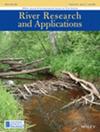附带效益:为濒危鱼类提供正常的河水流量,使河岸恢复活力
IF 1.9
4区 环境科学与生态学
Q4 ENVIRONMENTAL SCIENCES
引用次数: 0
摘要
与世界上大多数河流一样,跨境北美库特尼/伊河也经历了多重影响,包括流域开发、河道疏浚、洪泛区清理、排水和筑堤。1964 年美国和加拿大签订的《哥伦比亚河条约》(CRT)授权建造利比大坝,并于 1975 年开始调节下游水流,用于洪水风险管理和水力发电。在累积影响之后,库特奈河特有的白鲟种群崩溃,并于 1994 年被指定为濒危物种(美国《濒危物种法》)。随后,美国鱼类和野生动物管理局(U.S. Fish and Wildlife Service)的《生物意见书》(Biological Opinion)规定,利比大坝的运行要为鲟鱼产卵提供春季流量脉冲。这些措施带来了意想不到的好处,即本地和引进的河岸木棉树和柳树的幼苗得以大量繁殖。对调节流量系统进行了进一步的适应性管理,以提供更规范(自然)的系统,平衡生态功能与洪水风险管理和水力发电之间的关系。更广泛的生态考虑因素与提议的国际 CRT 现代化优先事项相一致。观察到的反应表明:(1) 多种多样的水生生物和河岸生物依赖于共同的河流水流特征;(2) 正常化的水流制度提供了大量的生态效益;(3) 由于受到多重影响,受管制河流沿岸形成了混合生态系统,自然过程和群落与改变过程和群落相互融合。对于其他受管制的河流,我们建议:(1) 在可行的情况下,允许春季高流量;(2) 随后在高峰后逐渐衰退;(3) 在夏中至夏末温暖干燥的间歇期保持足够的流量。本文章由计算机程序翻译,如有差异,请以英文原文为准。
Collateral benefits: River flow normalization for endangered fish enabled riparian rejuvenation
Like most rivers worldwide, the transboundary North American Kootenay/i River has experienced multiple impacts including watershed developments, river channelization, and floodplain clearing, draining, and diking. Construction of Libby Dam was authorized by the 1964 Columbia River Treaty (CRT) between the United States and Canada, and in 1975 began regulating downstream flows for flood risk management and hydropower generation. Following cumulative impacts, the endemic Kootenai River White Sturgeon population collapsed and was designated as endangered in 1994 (U.S. Endangered Species Act). Subsequent Biological Opinions from the U.S. Fish and Wildlife Service prescribed Libby Dam operations to provide springtime flow pulses for sturgeon spawning. These provided the unanticipated benefit of substantial seedling recruitment of native and introduced riparian cottonwoods and willows. The regulated flow regime was further adaptively managed to provide a more normative (natural) regime, to balance ecological functions with flood risk management and hydropower generation. The broadened ecological considerations would be consistent with the proposed priorities for the modernization of the international CRT. The observed responses revealed that (1) diverse aquatic and riparian organisms are dependent on common river flow characteristics; (2) a normalized flow regime provided substantial ecological benefits; and (3) due to multiple influences, hybrid ecosystems develop along regulated rivers, with a blending of natural and altered processes and communities. For other regulated rivers, we recommend that (1) high springtime flows be allowed, as feasible; (2) followed by the gradual post-peak recession; and (3) the maintenance of sufficient flows through the warm and dry interval of mid to late summer.
求助全文
通过发布文献求助,成功后即可免费获取论文全文。
去求助
来源期刊

River Research and Applications
环境科学-环境科学
CiteScore
4.60
自引率
9.10%
发文量
158
审稿时长
6 months
期刊介绍:
River Research and Applications , previously published as Regulated Rivers: Research and Management (1987-2001), is an international journal dedicated to the promotion of basic and applied scientific research on rivers. The journal publishes original scientific and technical papers on biological, ecological, geomorphological, hydrological, engineering and geographical aspects related to rivers in both the developed and developing world. Papers showing how basic studies and new science can be of use in applied problems associated with river management, regulation and restoration are encouraged as is interdisciplinary research concerned directly or indirectly with river management problems.
 求助内容:
求助内容: 应助结果提醒方式:
应助结果提醒方式:


